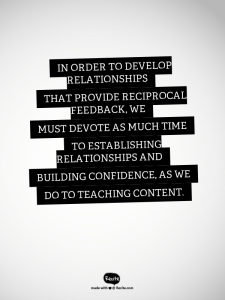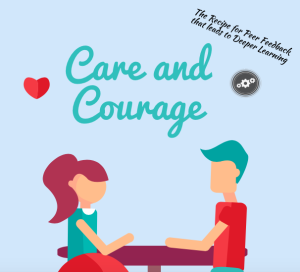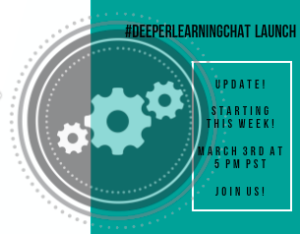Last week a brave and forward-thinking colleague introduced her kindergarteners to peer critique. Similar to many teachers’ first attempts at peer feedback, she shared that her students weren’t initially excited about their classmates marking up their papers. Fair enough. After much discussion they arrived at understanding “the why” behind giving and receiving feedback and agreed they needed more practice. A win for this teacher, for sure!
In a parallel world, while reading feedback from my editor on my current project I decided to entertain myself by counting the red lines on the document she returned to me. 14 omissions, additions and comments in the first paragraph! While it’s always a humbling experience, it’s also invigorating-it’s like I can see my work improve in front of my eyes. But it hasn’t always been that way for me and it’s not that way for most younger students who are new to collaborative relationships for feedback.
In order to develop relationships that provide reciprocal feedback, we must devote as much time to 
Establishing caring relationships
- In order to get students to care about the work of their peers we must first help them to learn how to care about the quality of their own work. We can do this by find ways to create relevant learning experiences for students-learning that relates to their passions and skills, and also serves a direct (and mutually agreed upon) purpose to their current and future life outside the 4 walls of the classroom .
- To help students care about helping peers improve their work we must establish an academic community in our classrooms and schools. Hewlett Foundation defines this as the following:
I belong in this academic community: Students feel a strong sense of belonging within a community of learners and value intellectual engagement with others. Students understand learning as a social process and actively learn from one another and support each other in pursuit of learning goals. Students readily engage in the construction of meaning and understanding through interaction with peers.
- We can do this by establishing and revisiting classroom norms, increasing opportunities for meaningful student student discourse, and scaffolding student collaboration.
- We have to commit to the process of peer feedback-it’s messy and difficult and takes time. However, with continued work on developing these skills students will begin to see that the process works! Once students have established these caring relationships and begin to receive helpful feedback from their peers they will actually begin to seek out critique on their own-I promise!

- Putting your work in front of a peer for feedback can be a vulnerable experience; Therefore it is crucial that students feel safe in doing so. Students can gain confidence in this process when it is a successful experience, so set them up by spending time on developing an academic community in your classroom.
- Ongoing reflection is integral to building students’ confidence. When a student can lay out their drafts in front of themselves and physically see how their work improved as a result of feedback, they will feel a sense of pride for their work. Building in time to reflect, through daily journals or exit tickets, and at the end of a project/unit are opportune times for this.
- Celebrate mistakes. Help students to see that “failure” isn’t how it’s traditionally defined and in fact should be viewed as learning opportunities. Allow students to share out their “favorite fails” and celebrate when students persist and display grit.
- To learn more about academic courage, check out this Teaching Channel video series on the topic, presented by Ron Berger.
If you read through this blog and are experimenting or thinking about experimenting with peer feedback I want to applaud you-it’s hard work, but it’s also meaningful work! The messy ambiguity that comes with the process of implementing peer critique isn’t typically what we talk about when we talk about implementing Common Core in our classrooms (CCSS.ELA-LITERACY.WHST.6-8.5, CCSS.ELA-LITERACY.WHST.9-10.5, CCSS.ELA-LITERACY.WHST.11-12.5) or when we paint the beautiful picture with the Deeper Learning Competencies. But it is what we are talking about in the CraftED Community. Join the conversation and follow us on Twitter @craftEDcm, see great articles and resources when you like our Facebook page, and mark your calendars for our #deeperlearningchat beginning March 3rd at 5 PST.
We can’t wait to share our Foundational Strategies that scaffold peer feedback and reflection. Join our mailing list at www.craftedcurricu.staging.wpengine.com to be notified when we release our products!
